Since the beginning of the century, the PLA has introduced a range of tactical air-to-surface missiles (ASM) as standoff weapons for its air force and naval aviation troops. These missiles are a combination of both Russian and Chinese indigenous designs, intended primarily for use against large static land targets such as bridges and buildings. An overwhelming majority of PLA’s tactical ASMs use TV-guidance with datalink command, used in conjunction with a targeting pod to provide datalink between the missile and its carrier aircraft. The tactical ASMs introduced in more recent years feature ‘fire-and-forgot’ and all-weather, day/night operation capabilities.
In the first of this two-part report, we examine five tactical ASMs introduced by the PLA between 2000 and 2006.
KD-63
The KD-63 (KongDi-63, official designation K/AKD63, previously designated YingJi-63 or YJ-63), is an air-launched cruise missile (ALCM) developed by China Haiying Electro-Mechanical Technology Academy (CHETA, a.k.a. The Third Academy). The missile was derived from the HY-4 (NATO code name: CSS-C-7 Sadsack) land-based anti-ship cruise missile (ASCM) and the YJ-6 (CAS-1 Kraken) air-launch anti-ship missile, both of which can trace their origins to the HY-2 (CSS-C-3 Seersucker), a Chinese derivative of the Soviet P-15 (SS-N-2 Styx) liquid-fuel active radar-homing anti-ship missile.
The KD-63 features a large round body with a round nose and an engine inlet located under the missile body near the rear end. It has a pair of large delta wings and an X-shape tail control surface arrangement. The missile consists of four main sections: guidance, warhead, propulsion, and control surfaces.
The KD-63 is carried by the modernised Xi’an H-6H (Tu-16 Badger) medium-range bomber. Each H-6H carries two KD-63 missiles on its under-wing stores stations. The missile is launched at altitudes between 200 m to 5,000 m from a dive. Once leaving the carrier aircraft, the missile drops down for 70-120 m before its engine starts. The missile is then accelerated to a sustained subsonic speed of 900 km/h and flies at a typical altitude of 600 m.
The KD-63 relies on inertial navigation, with input of datalink command (and possibly GPS signal correction) and TV terminal guidance. The missile is fitted with a CCD camera, which transfers images of the target back to the carrier bomber. The bomber’s onboard fire-control computer then sends correction command back to the missile until it hits the target. Alternatively, the missile can be guided using a manual command to line of sight (MCLOS) method, where the weapon operator manually ‘flies’ the missile remotely to its target. The communications between the missile and the carrier bomber is via the datalink antenna located underneath the bomber’s fuselage behind the bomb bay doors.
Carrying a 500kg high-explosive (HE) warhead, the KD-63 was designed to hit large fixed land targets, such as bridges, airport, command posts, and barracks. Its TV-seeker can lock on a typical target at a distance of 12 km. The missile’s effectiveness is greatly hampered at night or in adverse weather conditions. It is also vulnerable to enemy jamming due to its dependence on the carrier aircraft for guidance command.
Specifications:
| IOC | 2004 |
| Length | 7.0 m |
| Diameter | 0.76 m |
| Launch weight | 2,000 kg |
| Warhead | 500 kg HE |
| Propulsion | FW-41B turbojet |
| Speed | 900 km/h |
| Max range | 180 km |
| Min range | 20 km |
| Guidance | Inertial + datalink command + GPS? + TV terminal |
| Max target detection range | 18 km |
| Max target lock-on range | 12 km |
| Launch altitude | 200 – 5,000 m |
| Flight altitude | 7 – 1,000 m (typical 600 m) |
| CEP | 2 – 6 m |
KD-88
The KD-88 (KongDi-88, official designation K/AKD88) is the land-attack version of the YJ-83K (YingJi-83K, or C-802) series air-launched subsonic sea-skimming anti-ship cruise missile. It is PLA’s second-generation standoff weapon, designed for use against fixed high-value targets. The baseline version of the missile is fitted with a TV-seeker for terminal guidance, which only allows the missile to be operated in good weapon conditions in day light. Alternatively the missile could be fitted with semi-active radar or infrared imaging seekers for all-weather, day/night operation capability.
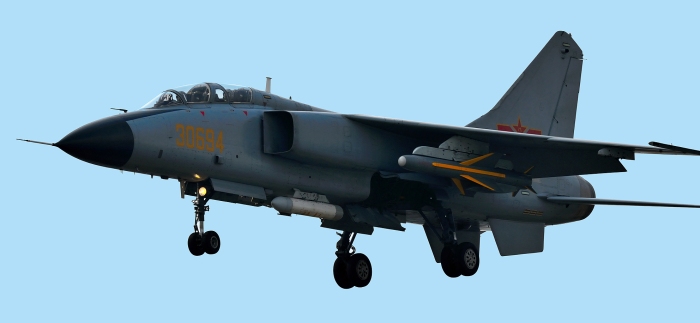
A PLAAF JH-7A fighter-bomber carrying the KD-88 missile under its wing. The targeting pod is clearly visible underneath the aircraft fuselage

KD-88 air-to-surface missile is similar in concept to the U.S. AGM-84 SLAM, but is fitted with a TV-seeker which is more prone to adverse weather and enemy jamming
CHEAT initially introduced a land-attack version of its C-802A anti-ship missile debuted C-802KD during the 2005 DSEI exhibition. Fitted with a semi-active radar-homing seeker, the missile could be used to attack both surface vessels and fixed land targets. Other features of the missile included on-off-on radar operation and multiple target selection capabilities. The missile had a launch weight of 600 kg and could deliver a 190 kg HE warhead to a maximum distance of 180 km.
The TV-guidance version of the missile, designated KD-88, was commissioned by the PLA around 2006. The missile uses inertial navigation system (INS) with datalink command and possibly GPS inputs for mid-course correction. The terminal guidance of the missile can be controlled either by the aircraft’s fire-control computer automatically or by the weapon operator manually. The carrier aircraft carries a targeting pod under its fuselage for receiving television images of the target from the missile and transmit guidance command back.
More recently, CHEAT revealed a passive infrared-homing version of the missile debuted CM-802AKG. According to CHEAT’s brochure, the missile uses infrared homing with datalink command input, and is capable of attacking targets both on land and in the sea. The missile has a launch weight of 670 kg and carries a heavier semi-armour-piercing HE warhead (285 kg) , with a maximum range of 230km.
Kh-29T
The Kh-29 (NATO reporting name: AS-14 Kedge) is the short-range air-to-surface missile designed by Russian Matus Bisnovat’s “Molniya” (Lightning) and Vympel Design Bureau in the 1980s. The missile is available in two variants: (Article 63) semi-active laser guided version designated Kh-29L, and (Article 64) TV-guided version designated Kh-29T. The PLAAF acquired 2,000 examples of the Kh-29T missile in 2002 from Russia, as part of the weapon package for the Su-30MKK fighters it ordered from Russia. The missile has been seen in action during the “Peace Mission 2005″ China-Russia joint exercise.
The PLAAF ordered 2,000 Kh-29T missiles from Russia in July 2002 and received them in the same year. This may suggest that they came out of existing Russian Air Force inventory rather than new production. In 2004 the Chinese publicity photos confirmed that the missile was operational with the PLAAF, carried by its latest Su-30MKK multirole fighter-bomber aircraft.
Comparable in performance to the U.S. AGM-65 Maverick but with a larger size, the Kh-29 is intended primarily for use against larger battlefield targets and infrastructures such as industrial buildings, airports, depots and bridges. The T variant (Article 64) of the missile is fitted with a Tubus-2 television seeker, with automatic optical homing to a distinguishable object indicated by the pilot in the cockpit.
The Tubus-2 TV seeker was developed by NPO “Impuls” from Moscow, working in visual waveband (0.4 to 0.95 μm). The missile before launch passes the picture to the screen in the cockpit and after launch is of “fire-and-forget” type. The missile is carried on the AKU-58 launcher pylon, from which it drops down before its engine starts. The maximum distance of launch is 8-10 km and the minimum distance is 3 km. The missile has an accuracy of 5-8m CEP.
The missile can be fired from altitudes from 200 m to 10,000 m, at the speeds between 600 and 1,250 km/h. At altitudes of 20 -500 m it is launched from horizontal flight, at altitudes 800-2,000 m from shallow dive and at 1,500-4,000 m (optimal altitudes) is launched from more step dive. However, some sources suggest that the launch altitude above 5,000 m is purely theoretical capability, without serious tactical use.
| Length | 3.875 m |
| Diameter | 0.38 m |
| Wingspan | 1.10 m |
| Launch weight | 680 kg |
| Warhead | 317 kg (116 kg HE) |
| Propulsion | Solid rocket |
| Speed | 1,250 km/h |
| Max range | 8 – 10 km |
| Min range | 3 km |
| Guidance | TV |
Kh-31P/YJ-91
The Kh-31P (NATO reporting name: AS-17C Krypton-C) is the anti-radiation missile (ARM) developed by the Russian Zvezda Bureau, based on the Kh-31A (AS-17A) supersonic anti-ship missile. The PLA obtained some Kh-31P examples in the late 1990s, and has developed an indigenous version known as YJ-91 (YingJi-91). It is not known whether the YJ-91 production has been licensed by Russia. However, other sources suggested that the PLA imported some Kh-31P missiles from Russia between 2002 and 2004, possibly due to the delay in the YJ-91 development.
Originally developed for the Soviet Air Force specifically against the U.S. Patriot air defence missile system, the Kh-31P was designed to suppress enemy air defence systems and makes its early warning ‘blind’ by striking their radar. The Kh-31P/YJ-91 entered service with the PLA around 2003-2004, offering an advanced medium-range standoff anti-radiation strike capability previously lacked by the force. The missile can be carried by its Su-30MKK Flanker-G fighter or the indigenous JH-7 fighter-bomber.
The Kh-31P/YJ-91 has a long slim cylinder body with a sharp nose, with four rocket boosters attached at the rear half of the missile. There are four clipped delta wings and four smaller tail surfaces of similar shape organised in cruciform configuration around the fuselage. Internally the L-112E radar seeker (D-F band) is in the nose with the guidance system, batteries and radio altimeter in the remainder of the front compartment, and the 87 kg HE warhead immediately behind. A fuel tank, presumably with a kerosene-type fuel, occupies the area to the leading edges of the wing and the area almost to the rear edges is occupied by the ramjet. Much of the rear of the missile is occupied by a solid propellant booster through which runs the ramjet nozzle. Actuators are to be found below the tail surfaces.
The missile features a unique dual propulsion system designed by the Soyuz Design Bureau in Turayevo near Moscow. First the missile is accelerated by its solid-fuel rocket engine to a speed of Mach 1.8, then the engine is discarded and the interior of the missile is converted into the combustion chamber of the missile’s jet engine. The latter accelerates the missile to a speed of almost Mach 4.5, while four air intake holes on the sides of the missile body open up.
| Length | 5.21 m |
| Diameter | 0.36 m |
| Wingspan | 1.15 m |
| Launch weight | 600 kg |
| Warhead | 87 kg HE |
| Propulsion | Ramjet + integral solid rocket boosters |
| Speed | Mach 4.5 |
| Max range | 110 km |
| Guidance | L-112E passive radar homing, D~F band |
Kh-59
The Kh-59 (NATO codename: AS-13 Kingpost) is a standoff, TV-guided, medium-range air-to-surface missile developed by Russian Raduga Design Bureau. The missile was designed to engage large static ground targets such as bridges and buildings. First revealed in the 1991 Dubai Defence Exhibition, the Kh-59 missile is somewhat similar in concept to the U.S. AGM-84E SLAM. The PLA obtained the Kh-59 as a part of the Su-30MKK fighter acquisition package. The Kh-59 cruises at an altitude of about 7 m above water or 100 – 1,000 m above ground with the help of a radar altimeter. It can be launched at speeds of 600 – 1,000 km/h and altitudes of 200-11,000 m, with a CEP of 2-3 m. It is carried on an AKU-58-1 launch pylon.http://sinodefence.com/
| Length | 5.37 m |
| Diameter | 0.38 m |
| Wingspan | 1.26 m |
| Launch weight | 760 kg |
| Warhead | 148 kg HE |
| Propulsion | Solid rocket |
| Speed | 1,000 km/h |
| Max range | 50 km |
| Guidance | Inertial + TV terminal |
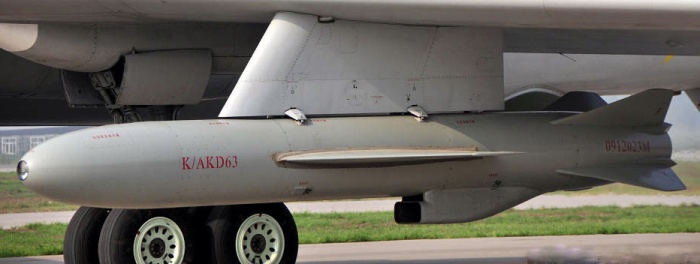
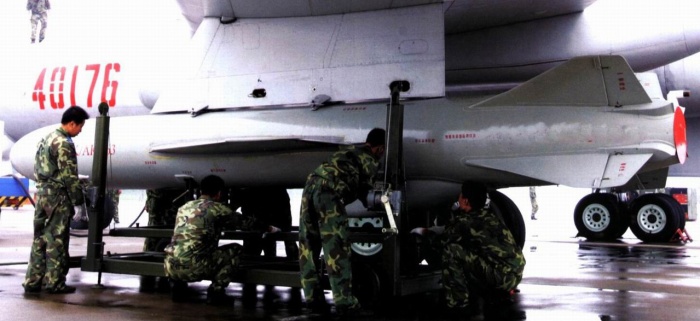
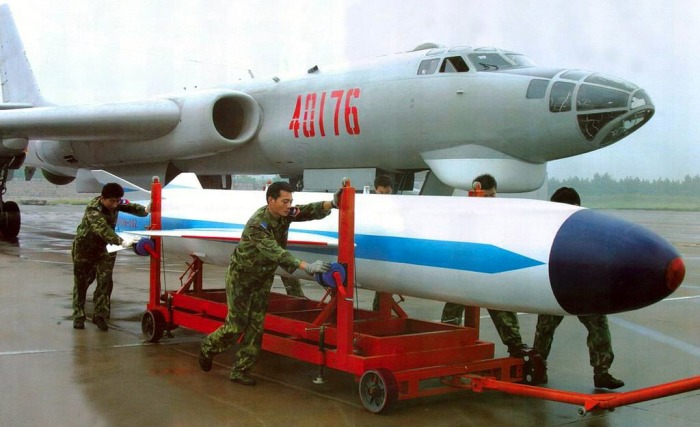
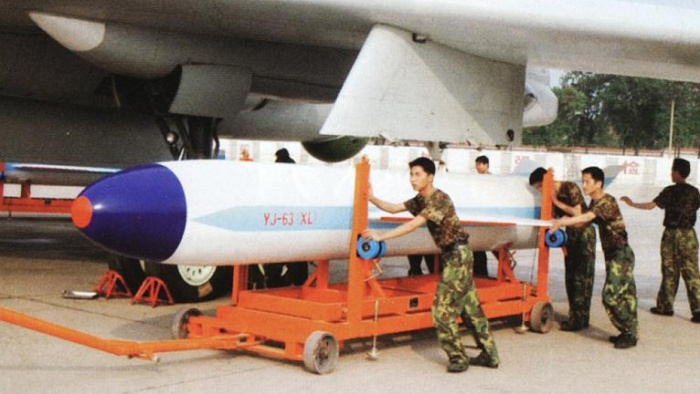
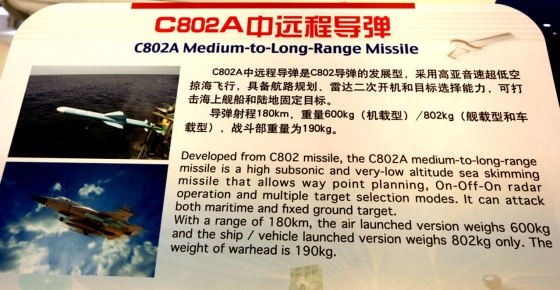
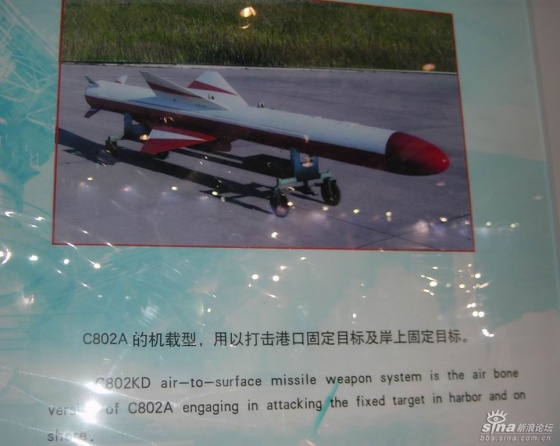
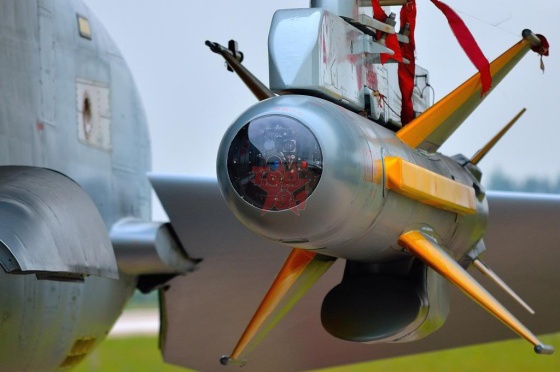
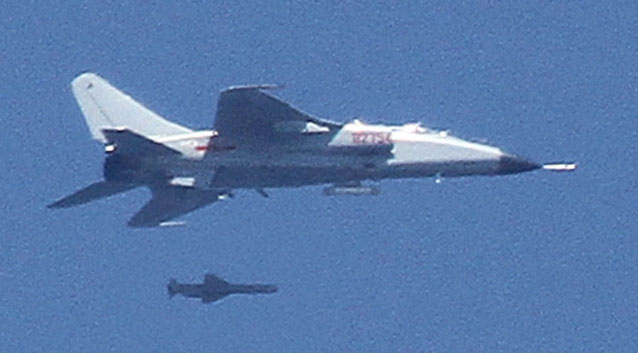
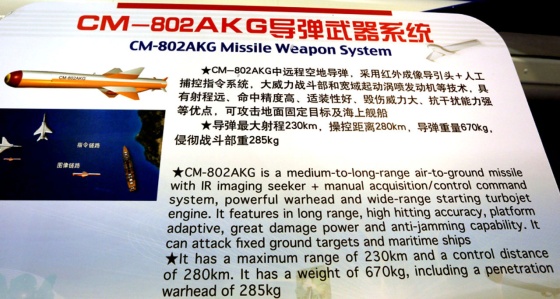
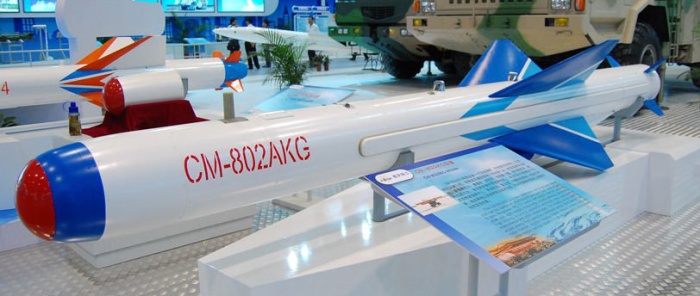
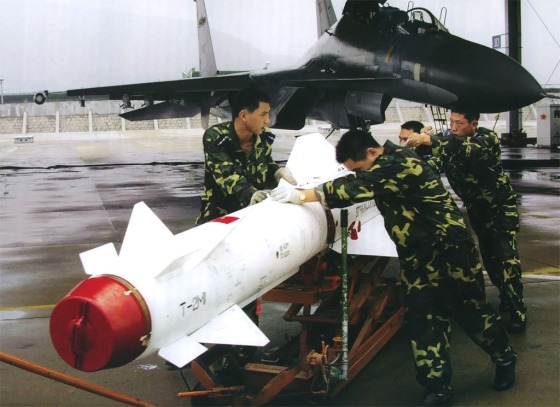

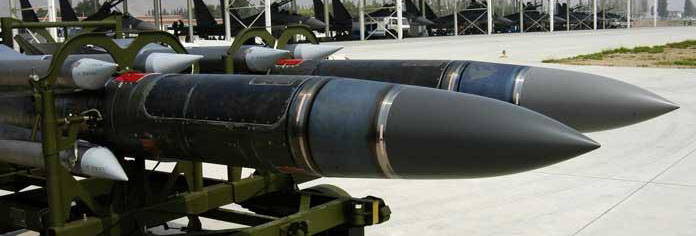
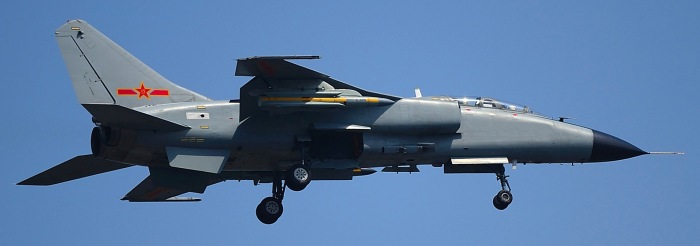
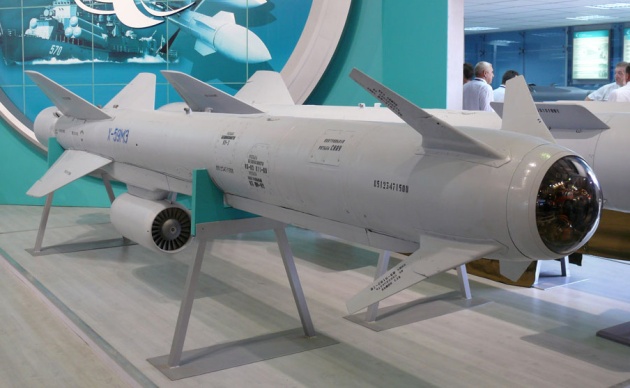
No comments:
Post a Comment